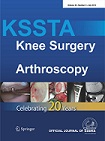
TRAUMA
ACL reconstruction: Morphine–bupivacaine more effective than tramadol–bupivacaine
Knee Surg Sports Traumatol Arthrosc. 2012 Sep;20(9):1839-44. doi: 10.1007/s00167-011-1791-7. Epub 2011 Nov 24.60 male ASA I–II patients undergoing arthroscopic ACL reconstruction were included in this study to compare different postoperative analgesics. Patients were randomized to receive 10 mg morphine and 0.5% bupivacaine, 100 mg tramadol and 0.5% bupivacaine, or 20 ml isotonic saline. The results of this study indicated that intra-articular morphine and bupivacaine provide better pain relief, longer analgesic duration (time until first request for analgesics), less analgesic requirement, and shorter unassisted ambulation and discharge time compared to intra-articular tramadol and bupivacaine.
Unlock the full ACE Report
You have access to {0} free articles per month.Click below to unlock and view this {1}
Unlock NowCritical appraisals of the latest, high-impact randomized controlled trials and systematic reviews in orthopaedics
Access to OrthoEvidence podcast content, including collaborations with the Journal of Bone and Joint Surgery, interviews with internationally recognized surgeons, and roundtable discussions on orthopaedic news and topics
Subscription to The Pulse, a twice-weekly evidence-based newsletter designed to help you make better clinical decisions
Exclusive access to original content articles, including in-house systematic reviews, and articles on health research methods and hot orthopaedic topics
Or upgrade today and gain access to all OrthoEvidence content for just $1.99 per week.
Already have an account? Log in


Subscribe to "The Pulse"
Evidence-Based Orthopaedics direct to your inbox.
{0} of {1} free articles
Become an OrthoEvidence Premium Member. Expand your perspective with high-quality evidence.
Upgrade Now












































































